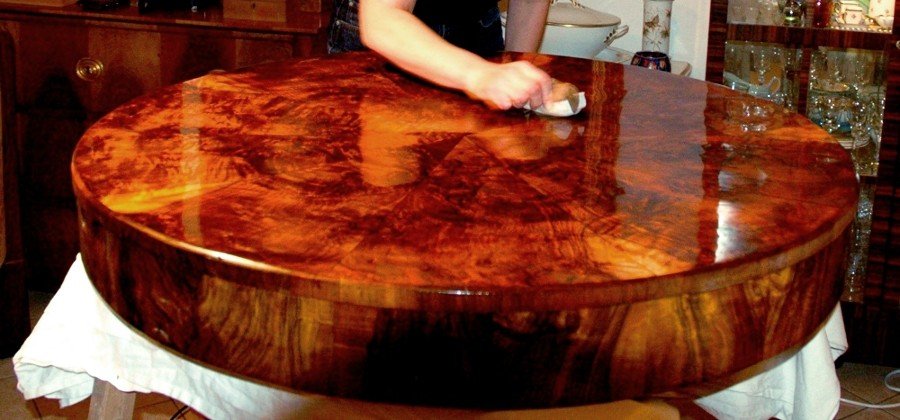The Surprising Truth About Wood Furniture Care
Beautiful wood furniture adds warmth and character to any home. But keeping it looking its best requires the right care. While many commercial cleaning products promise sparkling results, some contain ingredients that can harm your wood over time. One common culprit? Silicone (aka dimethicone).
Silicone-based furniture polishes and cleaners create a high-gloss shine, which might initially seem appealing. However, this shine comes at a cost. Silicone forms a film on the wood's surface that can be difficult, sometimes impossible, to remove. Some of the most well known, lemon-scented products marketed as furniture polish or "dust eliminator" contain silicone by its other name, dimethicone, which does indeed leave a high gloss coating on the wood. This film attracts more dust and grime and can prevent the wood from breathing and absorbing the needed moisture. Over time, this can lead to dryness, cracking, and a dull, hazy appearance. Plus, if you ever need to refinish or repair the piece, the silicone barrier will interfere with the adhesion of new finishes or glues.
Products to Avoid:
Anything containing silicone or dimethicone: Read the labels carefully! Terms like "silicone-based polish," "furniture polish with silicone," or even just the word "silicone" in the ingredients list are red flags.
Aerosol sprays: Many aerosol furniture polishes contain silicone and other harmful chemicals and solvents.
Products that leave a sticky residue: This residue often indicates the presence of silicone or other undesirable ingredients.
What to Use Instead:
The best approach to cleaning wood furniture is often the simplest:
Soft, damp cloth: For regular dusting, a soft, lint-free cloth dampened with water is often all you need. Make sure the cloth is just damp, not wet, to avoid water damage.
Mild soap solution: For more stubborn dirt, you can use a solution of mild dish soap and water. Again, use sparingly and ensure the cloth is only slightly damp. Always wipe the furniture dry immediately afterward.
Specialized wood cleaners: Look for wood cleaners specifically formulated without silicone. These are often labeled as "natural" or "restorative" wood cleaners. Always test any new cleaner on an inconspicuous area first.
Beeswax polish (occasionally): For unpainted or previously waxed wood, a high-quality beeswax polish can provide a protective layer and enhance the wood's natural beauty. However, use sparingly and follow the manufacturer's instructions.
Prevention is Key:
Dust regularly: Regular dusting prevents dirt buildup, which can scratch the surface.
Use coasters and placemats: Protect your furniture from water rings and spills.
Avoid direct sunlight: Sunlight can fade and damage wood over time.
Control humidity: Extreme fluctuations in humidity can cause wood to warp or crack.
By avoiding silicone-based products and using gentle, appropriate cleaning methods, you can keep your wood furniture looking its best for generations to come.
Aaron Warren, President Driftless Claims and Restoration, Limited
